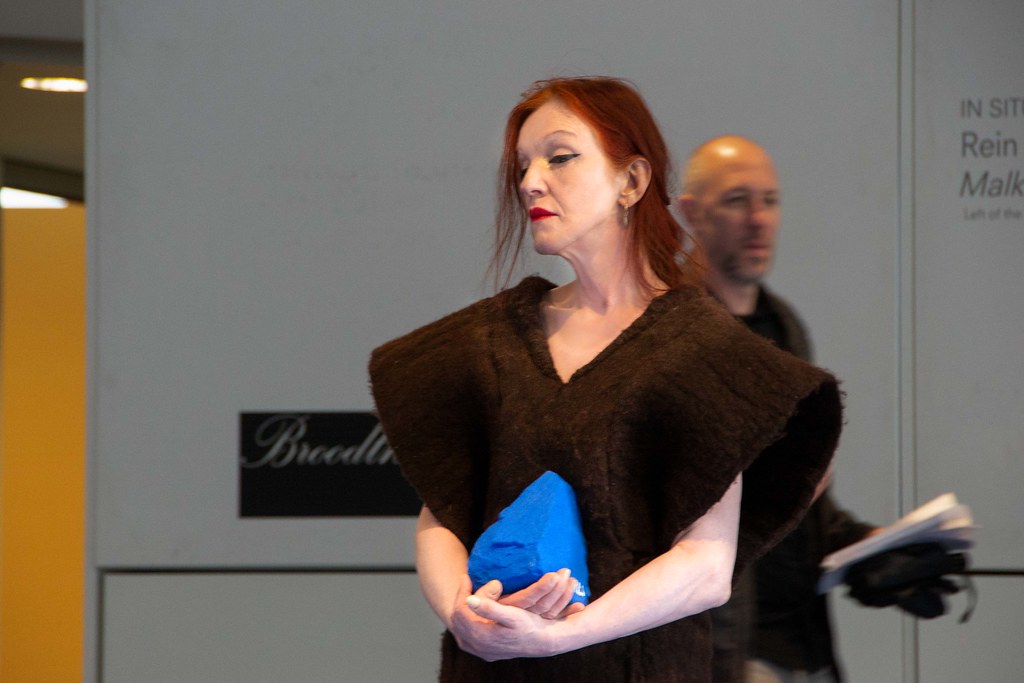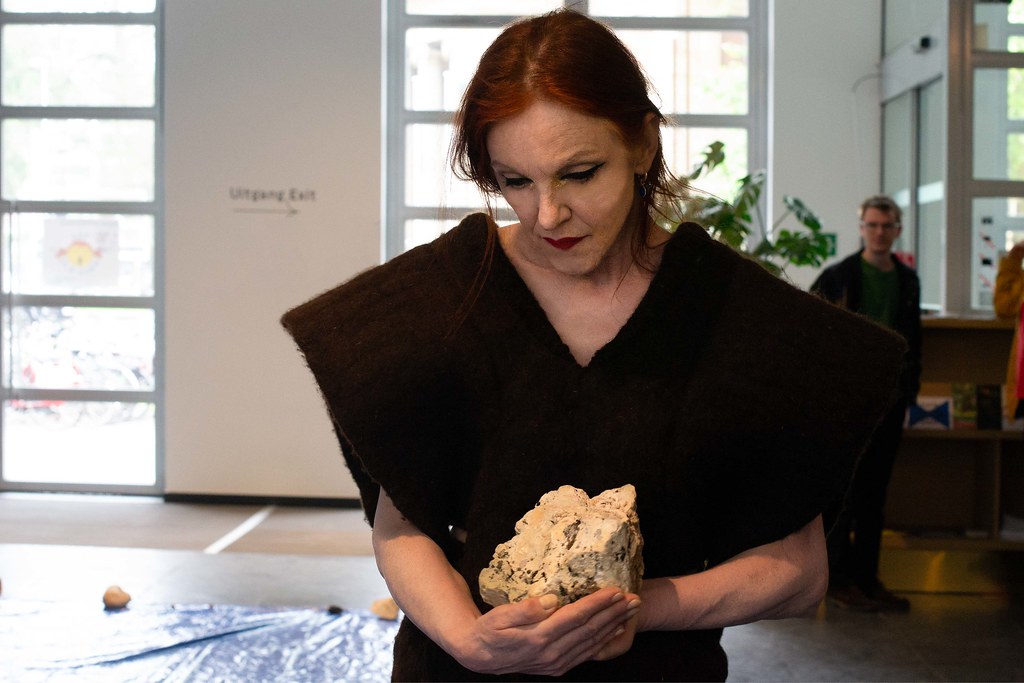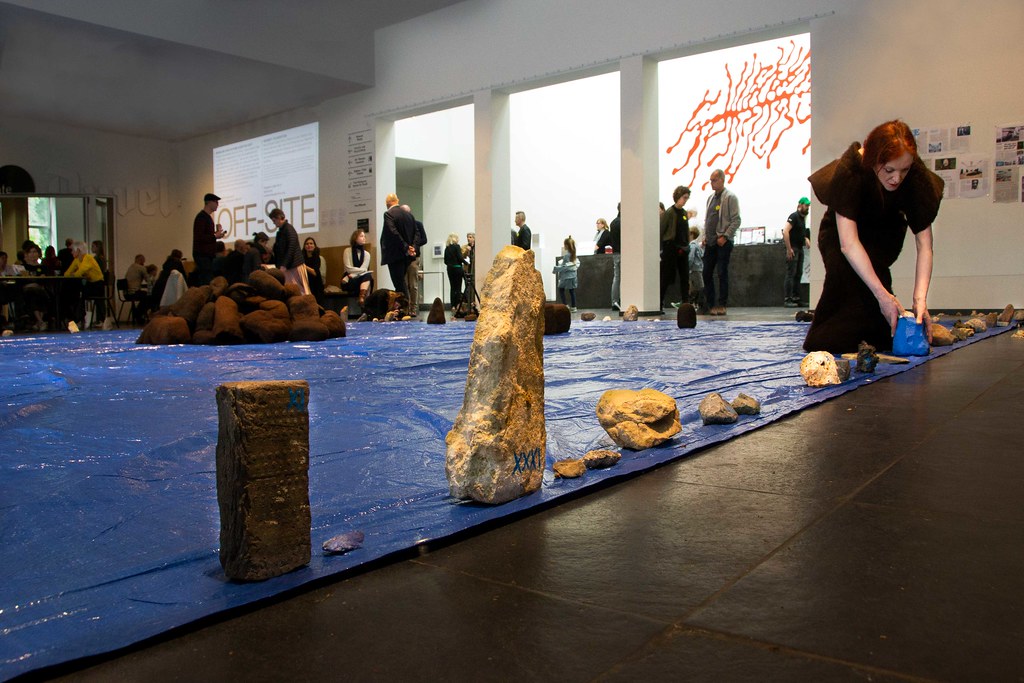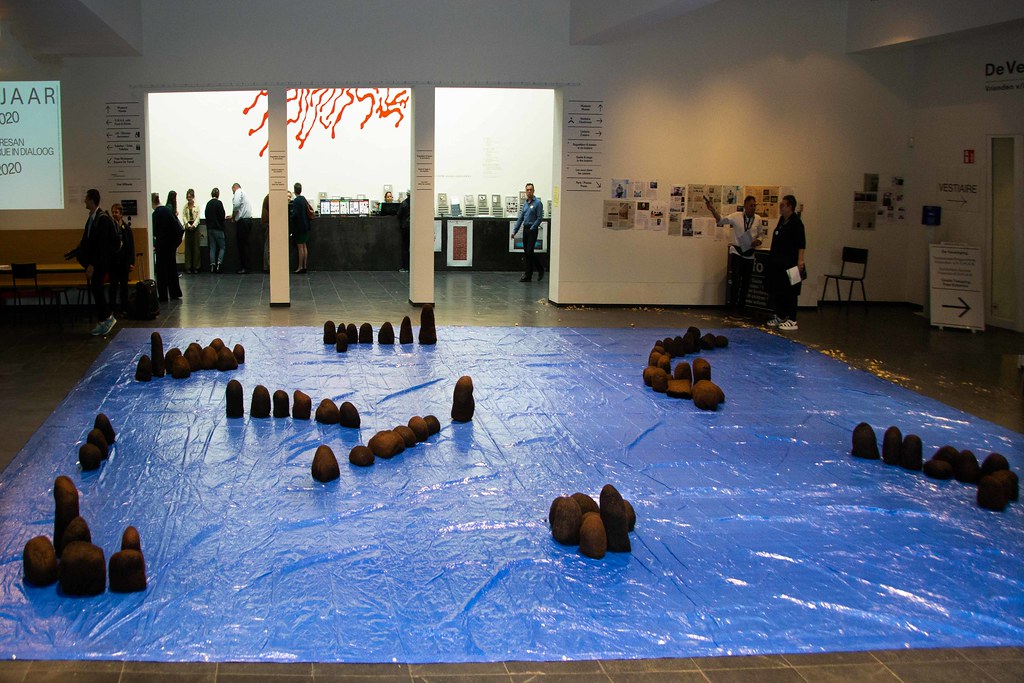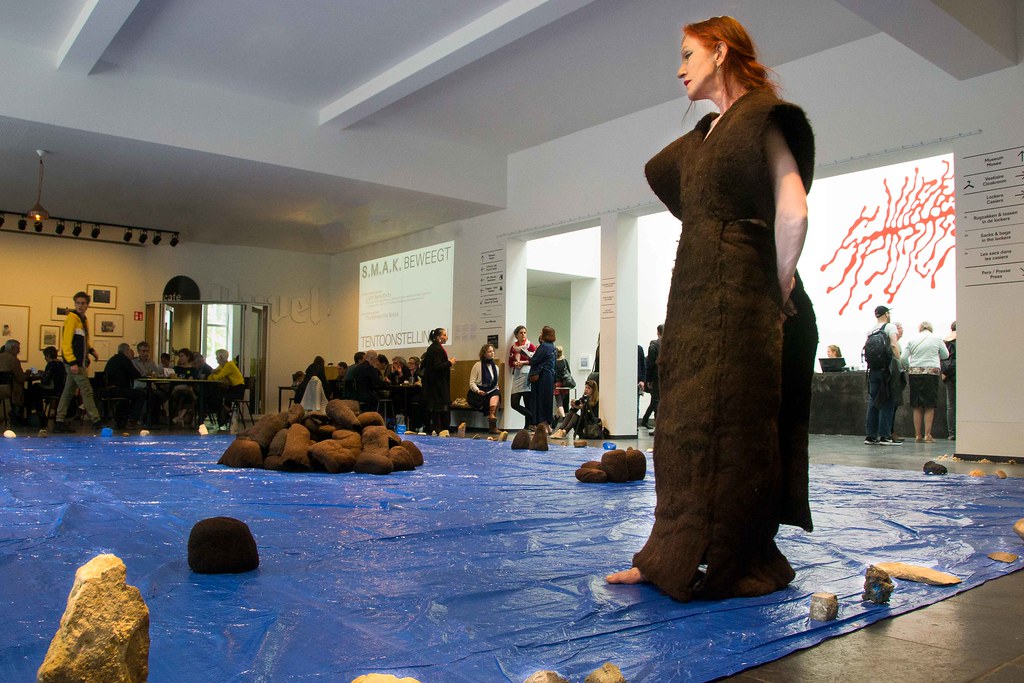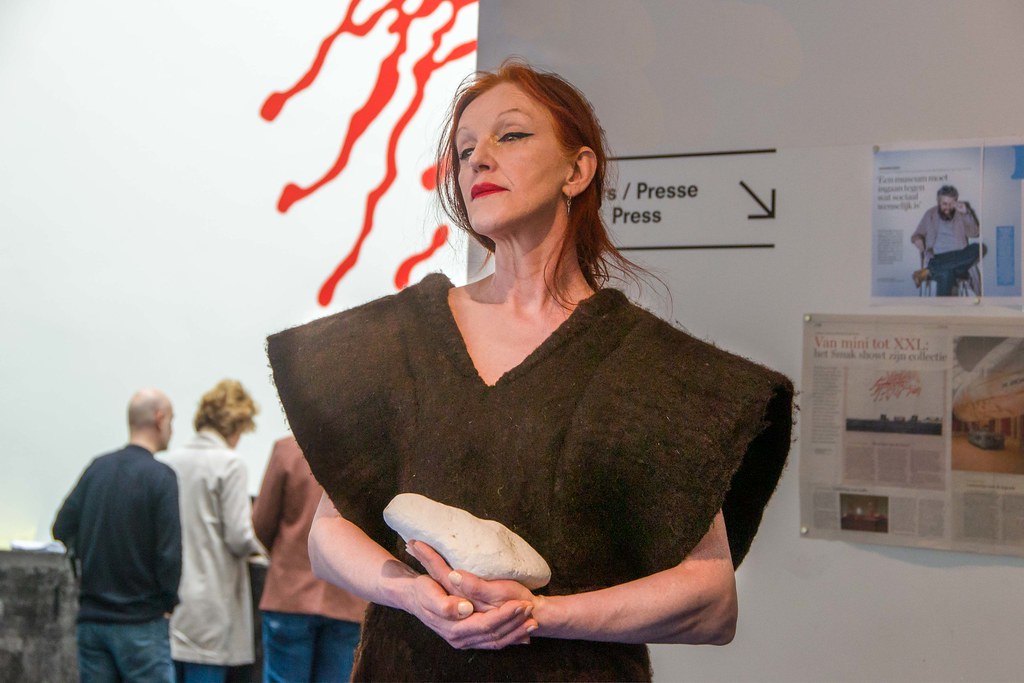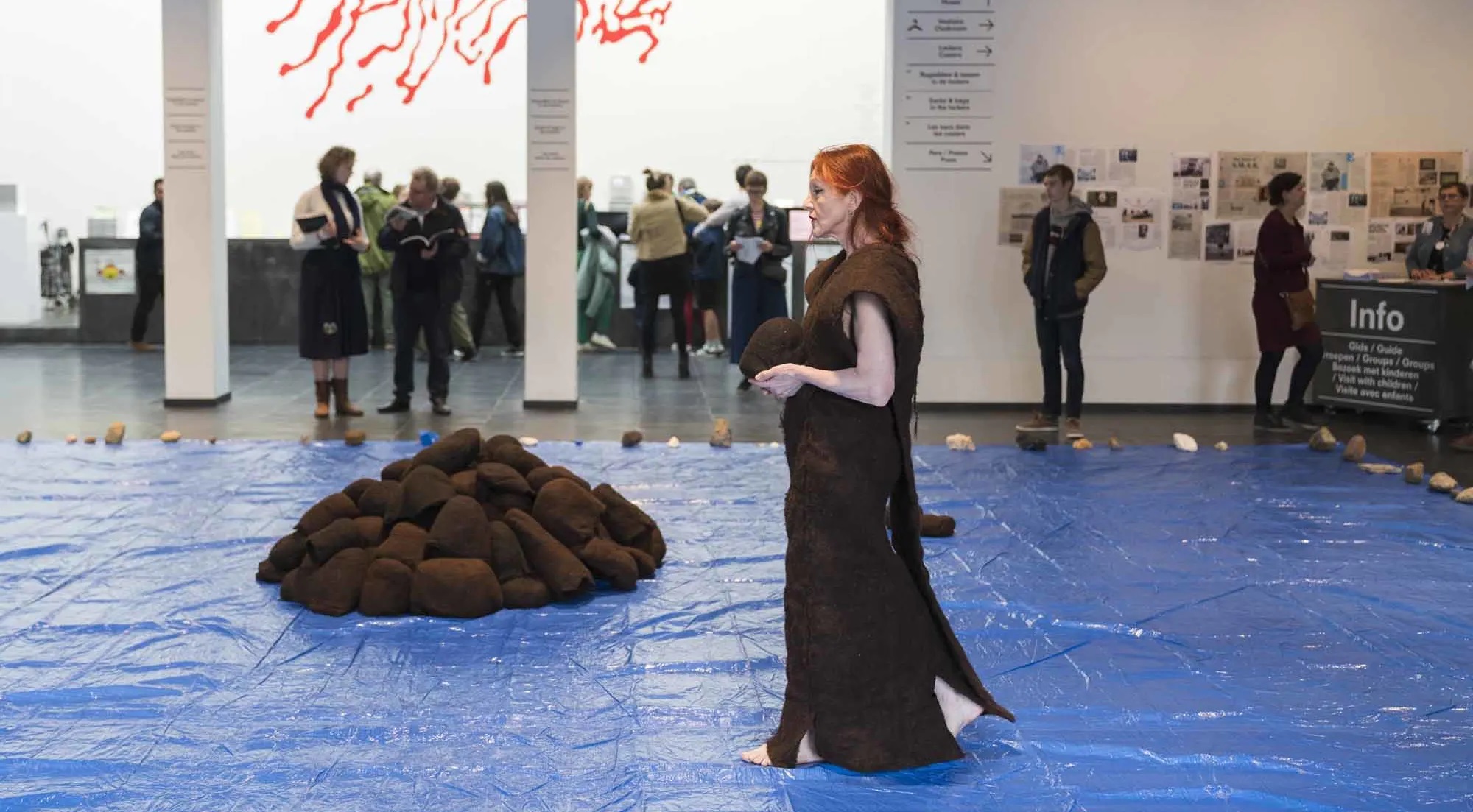PERFORMANCE:Marie Julia Bollansée-Geology
 Marie Julia Bollansée’s work is about people, their lives and deaths. The physical is a constant factor in Bollansée’s videos and performances, as she was trained as a classic sculptor. She plays the role of observer, translating age-old human themes into images that we can all relate to. Her performances bring the everyday but often hidden forces into the light. Her photo installations create fields of tension between primary materiality, poetry, and aesthetic images.
Marie Julia Bollansée’s work is about people, their lives and deaths. The physical is a constant factor in Bollansée’s videos and performances, as she was trained as a classic sculptor. She plays the role of observer, translating age-old human themes into images that we can all relate to. Her performances bring the everyday but often hidden forces into the light. Her photo installations create fields of tension between primary materiality, poetry, and aesthetic images.
By Dimitris Lempesis
Photo: S.M.A.K. Archive
Marie Julia Bollansée’s installations and performances contain a diverse range of elements. She creates combinations that include her body, pigment, utensils, materials with a personal or symbolic meaning, finds from nature, costumes, projected photos and videos and ambient sound. Bollansée regards her numerous travels and residencies as a form of research that helps her develop new ideas and discover fresh materials. She therefore borrows elements from Indian, Icelandic, Japanese and Italian literature, myths and poems, as well as those of her own village. The artist subsequently integrates them, together with the attributes, into new work that also touches upon urgent, contemporary themes. A striking thing here is the recurrent presence of the blue tarps in the colour that Bollansée defines as “Tarpaulin blue”. The artist has been haunted by these tarpaulins ever since a residency in Mumbai, where she noticed them for the first time. As a fundamental piece of kit and as a shelter, she sees them as symbolising both the vulnerability and the self-reliance of human beings. During the exhibition, Maria Julia Bollansée will also be staging a number of performances in the museum. On Sunday 15 August 2021 she will recreate “Geology” and on Sunday 19 September she will present a new performance. With 129 stones from around the world: 69 Menhirs (big stones), 48 Misfits (little stones) and 12 Absent Stones, all marked with a code that links to their place of origin, ,many travellers, contributed to the performance “Geology”. They brought along a stone, made a photograph on the site where they found it and told Marie Julia Bollansée the story of their journey. Stones that got lost on the way are represented by blue “Absent stones”. All these stones from around the world come together in the performance and are archived in an artist book. This book “GEOLOGY ARCHIVE: is part of the performance. In the final hour of the performance the audience was invited to participate, and to take a “Misfit” home.
Marie Julia Bollansée’s exploration of places and cities began during a residency in Paris in 2012, following which she has explored and experienced many cities. The artist absorbs these places and lets her observations speak through her work. In November 2014, Marie Julia Bollansée arrived in India for a residency in Mumbai at ‘What About Art?’, with a notion of being uprooted in an unknown land and rediscovering herself. She found familiar memories from her childhood in Antwerp around Mumbai. Just across the window from where she lived in Mumbai, the blue tarpaulin, which sheltered and housed a group of men, drew her attention. The blue then crept into the artist’s vision, at first slowly and then all of a sudden, this attraction, went on to thread together Bollansée’s exploration of Mumbai, and eventually other cities and her own artistic practice. “Waterfield Road” (2014), was Bollansée’s first video performance after the Mumbai residency. This work is more literal compared to later performances, and includes a metal frame and sheep’s wool to contextualise the open blue tarpaulin house of the workers on the terrace, filmed silently. This video performance gives rise to several questions that are further addressed in the artist’s work and the manner in which she observes and gathers images of a city. There is a sudden awareness of a sense of always being surveyed, tracked and watched, unaware – even in the private shelter of our homes. The same props appear in “Arabian Sea” (2014), where the artist’s performance against the blue tarpaulin hut mimics the fisherwoman drying her day’s catch unaware of the fact that her actions are being recorded. The distant sound of traffic puts into perspective the city by the seaside. The fish link to another of Bollansée’s video performances with Mumbai – “Khar Danda” (2015). Here the blue tarpaulin sits behind the fisherwoman, while she cleans and cuts the fish. The artist on the other hand, creates an action of almost undoing this act of killing and cutting. In a more recent work from the series, “Pali Naka” (2015), the artist’s performance immediately comments on the layered looped video of ladies dressed in burkhas and ‘face scarves’ jumping into an auto-rickshaw. A satire on contemporary dialogues about the act of covering and uncovering identity, the video begins with the artist clad in cotton bandages. As the performance progresses, the looped background video does not change, but the artist is completely uncovered and exposed with just the blue tarpaulin in front of her.
Photo: Marie Julia Bollansée Geology, performance in cooperation with the travellers and the audience, Cynthia Vertessen, Pablo Bollansée, camera: video, 6’21”, Anaïs Bollansée, photographs, Judith Schotte, Wim&Ann Vandenbroucke, assistance, Marie Julia Bollansée, concept, artist book, performance, felt costume & capsules, video-editing, soundscape, © Marie Julia Bollansée, Courtesy the artist and S.M.A.K.
Info: S.M.A.K., Jan Hoetplein 1, Gent, Belgium, Duration: 26/6-3/10/2021, Days & Hours: Tue-Fri 9:30-17:30, Sat-Sun 10:00-18:00, https://smak.be
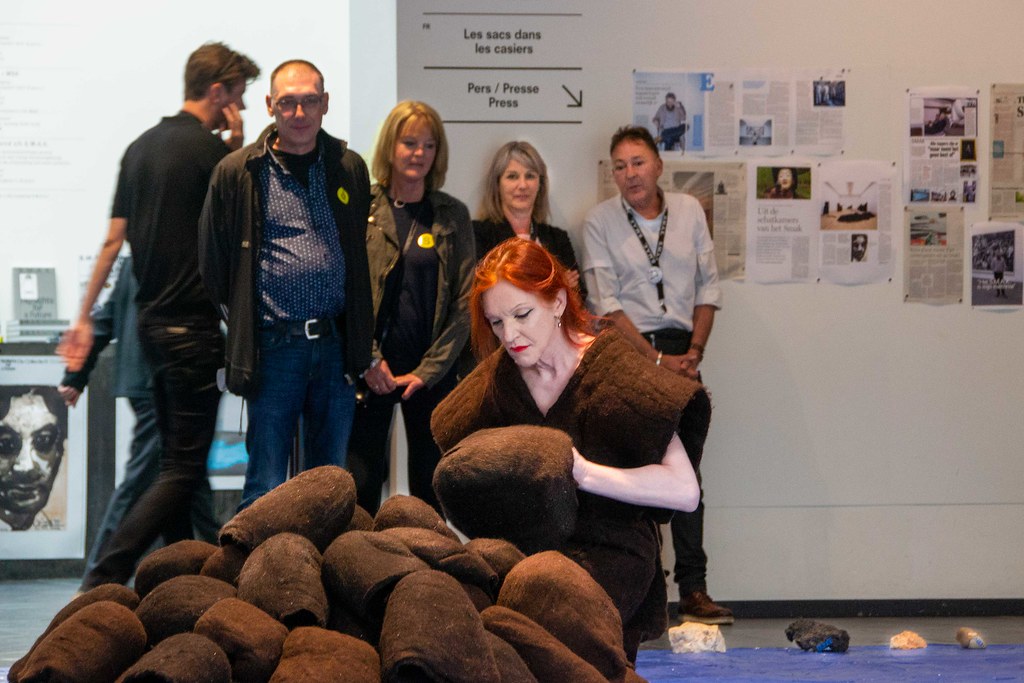
\
